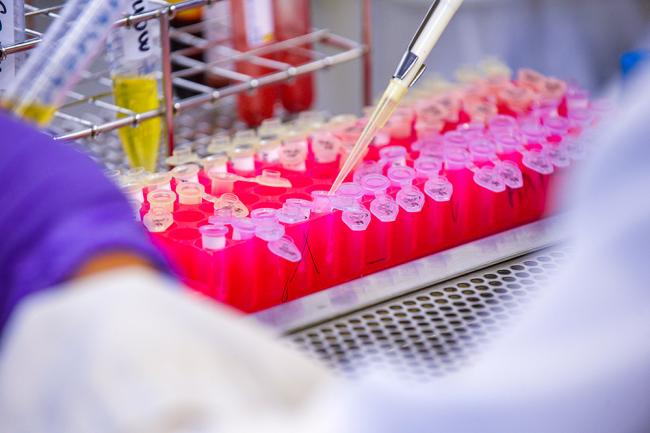Articles Menu

The reality is that pandemics don’t stop on a dime, vaccines can’t be rushed and their safe delivery is quite complicated.
Here then are some vaccine cautions drawn from history and science that help put this moment in perspective.
Pandemics end when the pathogen or its environment changes or when people successfully change their behaviours or immune systems. That adaptive process is never clean or neat.
True, vaccines have ended epidemics (localized outbreaks) but rarely with ease. In 2018, Ebola, a much deadlier virus than COVID-19 that killed two out of three infected, erupted in the Democratic Republic of the Congo for the tenth time. Despite a highly-effective, one-shot vaccine, it took more than two years to bring that outbreak under control due to community distrust and widespread political violence.
One frustrated group of researchers noted that “as levels of inaccessibility increase, there is a qualitative change in the effectiveness of the vaccination strategy.”
The World Health Organization did not declare that deadly outbreak over until June 2020. It took the vaccination of nearly 300,000 people to produce these statistics: 3,470 cases; 2,287 deaths and 1,171 survivors.
Because vaccine development is normally a slow and incremental process, the rushed timelines for COVID-19 have introduced some key data gaps.
For starters no one knows how long the current hyped vaccines will last. Will the population need to be re-vaccinated every six months, year or two years? The data doesn’t exist, but it makes a big difference in terms of the making, distribution and acceptance of the vaccines. As a general rule immunity tends not to last long for respiratory diseases.
Two of the vaccines (Moderna and Pfizer) deploy completely novel technology using messenger RNA (genetic material that encodes viral protein). They appear to do a good job of preventing severe disease, but may not prevent infection.
That means people who receive the vaccine could still pass on infection to others. That suggests that the vaccinated will still have to practice social distancing and mask wearing. It also guarantees that the pandemic will not end quickly.
Researchers also have no idea how the current batch of vaccines will affect the evolution the virus. Will these vaccines push the virus into greater virulence or quiet it down?
Accelerated timelines also mean abbreviated medical information. U.S. health expert William Haseltine has noted that an effective vaccine can trigger two reactions from the immune system, one of the most complicated systems in the human body. One is short-term antibodies; another is a long-term memory based on T-cells.
“This long-term immune response is best tested six months to a year after vaccination, which means, in the case of accelerated vaccine approval, we do not know if the vaccines generate long-term memory,” recently wrote Haseltine.
It normally takes years to prove the safety of a new vaccine. But as Haseltine has repeatedly noted, “no one can yet say what the long-term side effects of the vaccine may be,” given the accelerated timeline.
Like any technology, vaccines have both intended and unintended effects including a range of adverse reactions.
These only come to light once a large number of people have been vaccinated over a period of months and sometimes years. A flu vaccine in 1976, labelled as safe after a 7,000-member trail, went onto create “450 cases of Guillain-Barré syndrome in a quarter of the U.S. population,” noted Haseltine. A 1998 rotavirus vaccine caused obstructions in the intestines. A bad batch of the polio vaccine in the 1950s actually infected 40,000 people with polio killing five and paralyzing dozens. And so on.
So the real safety of COVID-19 vaccines, particularly completely new mRNA vaccines, won’t be really known for months. If the authorities don’t take extra care “to enforce and preserve the integrity and longevity of phase 4 safety and monitoring procedures,” warned Haseltine, “we risk once again making history — and not the good kind.”
For the last 100 years vaccines have ignited spirited political and cultural debates because these powerful technologies involve injecting foreign proteins into the body to trigger an immune response. Questions about safety often dominate these discussions.
A recent Pew survey found that half of U.S. citizens would refuse a COVID-19 vaccine due to concerns about safety and effectiveness. An Ipsos poll for Global News found similar numbers in Canada: just over half of Canadians would be willing to take a COVID-19 vaccine. (Atlantic Canadians appear to be significantly more supportive of vaccinations in general and mandatory vaccinations for COVID-19.)
Many researchers believe that herd immunity can only be achieved by vaccinating 70 per cent of the population. But if only half the population shows up for a shot, the virus will continue to spread widely.
Vaccine skepticism is often heightened by regulatory failures. It is instructive that both the U.S. Food and Drug Administration and the European Union approved an expensive anti-viral drug remdesivir for COVID-19 treatments. Yet there was little or no evidence it worked. Now the World Health Organization has recommended it not be used.
Early vaccine batches will rightfully go to essential workers, the elderly, those with pre-existing medical conditions and, if administered justly, the poor. That’s about 40 per cent of the population.
But it’s people under the age of 44 who are now driving the pandemic. The U.S. Centers for Disease Control recently reported that “increased per cent positivity among adults aged 20–39 years preceded increases among those aged greater than 60 years.”
That trend holds true for Canada too.
Yet governments likely won’t get around to vaccinating the drivers of the contagion until the very end. To experts like Haseltine that simply means “the spread of COVID will continue to the end of 2021 or possibly 2022.”
Canada, like many nations, has lined up a number of vaccine suppliers in Germany, the U.K., the U.S. and elsewhere. But we won’t get those unconventional messenger RNA vaccines until the Germans and Americans have vaccinated their citizens first.
Our colonial position is the product of free-market thinking and neglect. Canada used to be a world leader in affordable and safe vaccine development via the publicly-owned Connaught Laboratories.
That lab started with developing a vaccine for diphtheria in 1913 and then produced low cost versions for tetanus, typhoid and meningitis. Despite the lab’s global success and fame, then-prime minister Brian Mulroney privatized it in the 1980s. And that’s why Canadians will wait many months for a vaccine.
The journalist Linda McQuaig recently summed up our situation: “Canada once had a publicly-owned pharmaceutical company that could have made a difference in the current coronavirus crisis — except that we sold it.”
The Liberal government also failed to employ our limited private vaccine production capacity to make a COVID-19 vaccine under license.
Administrating a vaccine requires a highly co-ordinated public health system.
A recent Royal Society report on the challenges of COVID-19 vaccines noted the obvious: “Administration of a vaccine will require a large number of appropriately trained health workers with access to — and relationships with — different communities.”
But in many provinces politicians have chosen to burn out health care staff and resources by refusing to acknowledge the hazards of exponential growth and super-spreader events.
And distributing the vaccine won’t be like dropping off batches of pills to pharmacies. The Pfizer vaccine, for example, requires transportation and storage at -70 C (-94 F) or it loses its potency. Thankfully, the low-tech protein-based AstraZeneca vaccine requires normal refrigeration.
Given the human energy and expertise required for a safe and wide vaccine roll-out, only jurisdictions that have kept the virus to a minimum will be able to manage one with success.
Nassim Nicholas Taleb cogently noted in Nature this year that pandemics sow great uncertainty and have very long tails.

Once they start burning, it is difficult for humans to put out these natural biological fires. In addition to illuminating every social, economic and political division, their path of destruction can trigger dramatic changes in the fortunes of the poor and rich alike and never equally. Their unpredictable consequences often linger for years. Revolutions and rebellions routinely forage in their wide wake.
Even with a variety of effective vaccines, COVID-19 will likely seed a decade of instability and unrest around the world. Pandemic imperialism has already begun: Russia and China are using their vaccines to cement their political influence in poorer nations around the world.
So new high-tech or low-tech vaccines will not quickly deliver us from this messy pandemic nor return us to normal. It would be a mistake therefore to let down our guard and relax proven measures that protect lives: mask-wearing; social distancing; and rigorous testing, tracing and isolation. ![]()
Tyee contributing editor Andrew Nikiforuk is an award-winning journalist whose books and articles focus on epidemics, the energy industry, nature and more.
[Top photo: ‘The reality is that pandemics don’t stop on a dime, vaccines can’t be rushed and their safe delivery is quite complicated.’ Photo by Joshua Berson.]